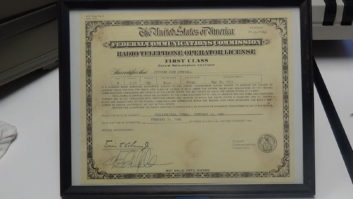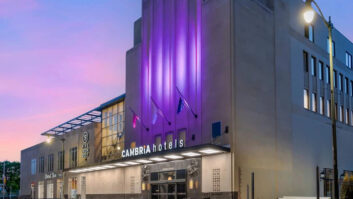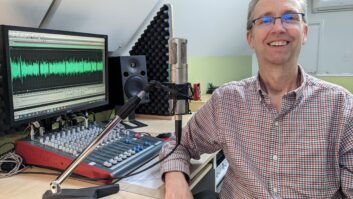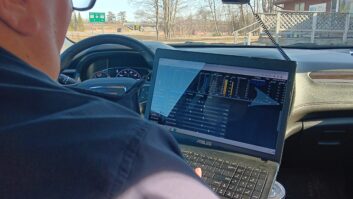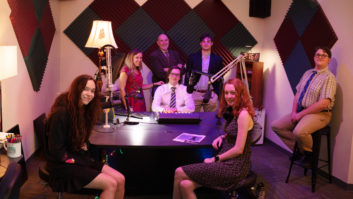As of 2018, 90.6 million Americans are now over the age of 55 — 28 percent of the population.
Most are Baby Boomers who have been passionate about radio throughout their lives. They are adopting new audio technologies but at a slower rate than younger people. They’re not stuck in the past, but some observers might say radio is.
“It’s like radio is caught in a demographic time warp,” says Jacobs Media President Fred Jacobs. Since the beginning of most of our careers, radio has been obsessed with targeting the 25- to 54-year-old demographic. “It stems from advertiser dictates — OK, preferences — that date back to the ‘80s,” he says. “Interestingly, they haven’t gravitated to an older demographic — 35-64 — as Boomers have aged. And in radio at least, they haven’t shifted younger either.”

Jacobs believes radio has done a poor job overall of educating the ad community about the spending power of Boomers and radio’s ability to reach them.

“Understandably, the RAB [Radio Advertising Bureau] has acted like Switzerland — not pushing any one demographic, ethnic group or gender. But the net-net is that radio is in a 25–54 box as it relates to advertisers. And as the climate has become more arduous for radio sellers, the need to stay tethered to 25–54s has even intensified.”
Longtime Los Angeles radio owner Saul Levine agrees that buyer education is needed.
“Until the radio industry spends some time and money on reducing the difficulty of selling older demos, they will continue to be difficult to sell, and too few radio salespeople will make the effort.”

Levine’s KSUR(AM) “K-Surf 1260” recently celebrated a year as an “oldies” station — playing the ’50s, ’60s and ’70s era pop music that crosstown competitor KRTH abandoned in their quest to deliver 25–54s. KSUR garners a 0.5 audience share [6+ Nielsen Audio, Feb 2018, Mon-Sun 6A-Mid]. Consider this: Despite the music being played in mono on AM, with no live DJs and little-to-no marketing, KSUR ties local heritage talker KABC(AM), a station with huge personnel costs.
OLDIES BUT GOODIES

In Chicago, another station playing an oldies-based blend, WRME “MeTVFM” jumped from 26th to sixth in February with an audience share of 3.6 (6+ Mon-Sun 6A-Mid, Nielsen Audio) using what’s legally classified as a low power TV Channel 6 signal at 87.7. That’s so far to the left end of the FM dial that it literally isn’t even available on some car radios. That didn’t keep the station from reaching an estimated 765,000 weekly listeners and being #2 in middays.
When Weigel Broadcasting decided to launch a radio spin-off of their popular nostalgia-driven MeTV television network, Program Director Rick O’Dell says they made a choice: “They’d rather rank near the top of the 35-64 demographic than be near the bottom among 25–54s.”
As a former boss of Rick’s used to say, “You gotta own a hill.” Rick credits Cheryl Esken, MeTVFM’s director of strategic sales and marketing, with designing creative campaigns for advertisers that target older listeners.

“We’re trying to get the message out there that listeners over 55 have the largest chunk of discretionary income,” says O’Dell. “Boomers buy big ticket items like second homes, luxury cars, and high-end vacations.”
Then again, ’60s and ’70s songs can be popular among younger listeners, too. O’Dell points to the soundtrack of last year’s big Disney superhero movie, “Guardians of the Galaxy 2,” and says, “It could have been subtitled, ‘Boomers’ Greatest Hits.’”
Among Persons 25-54 in Chicago, MeTVFM is now posting a respectable 0.2 rating, a benchmark that qualifies the station for more agency business.
Likewise, classic rock — the radio format that Jacobs pioneered — still attracts a big share of 25–54 listeners, even though its original listeners are older. The music is timeless.
“A century from now,” Jacobs predicts, “people will appreciate and listen to the Beatles, the Stones, Floyd, Queen and Zeppelin. People discover music in a myriad of ways that have only fragmented with the popularity of the Internet. So everyone has their personal ‘new music’ and their own playlists.”
Meanwhile, network TV has been disrupted by hundreds of new providers, even more so than radio has been as a music source. So reboots like “Will & Grace” and “Roseanne” are considered major hits among all demos, especially when compared to the “long tail” of niche TV programming.
Looks like there may be more reboots in radio’s future, too.
After 9 1/2 years of fun as the architect of LA’s “100.3 The Sound,” Dave Beasing has launched Sound That Brands, specializing in branded podcasts for major advertisers. Reach him on Twitter @DaveBeasing.


